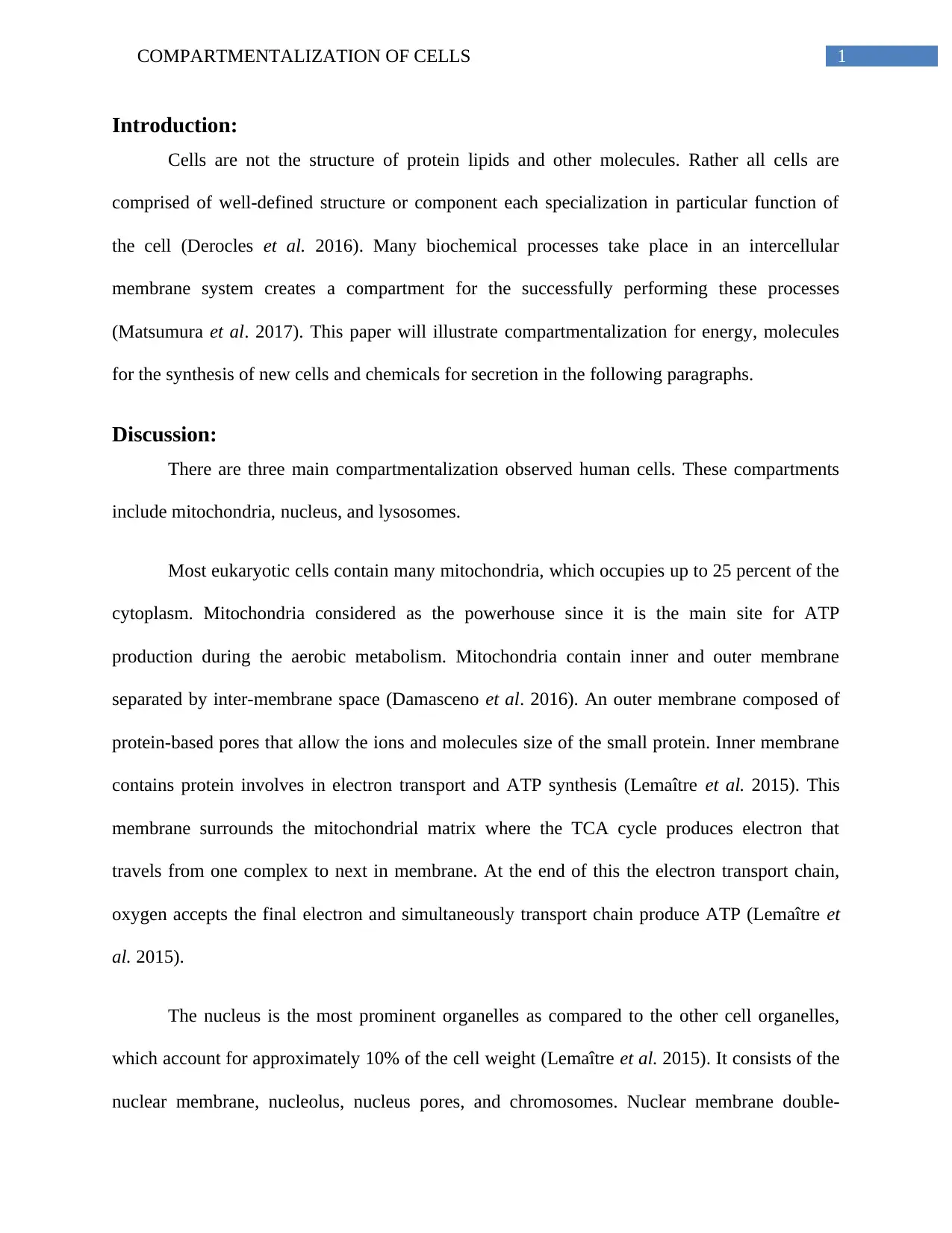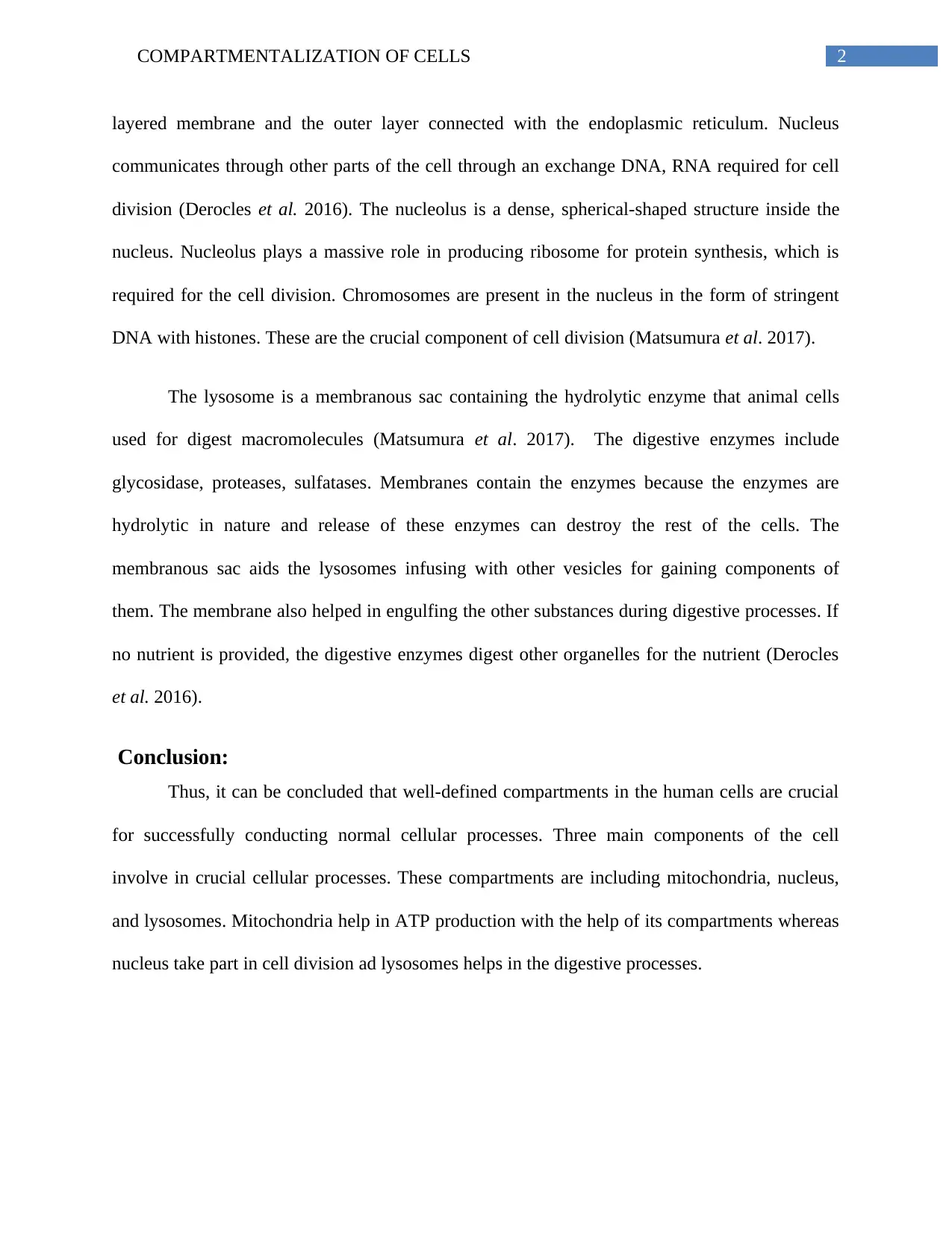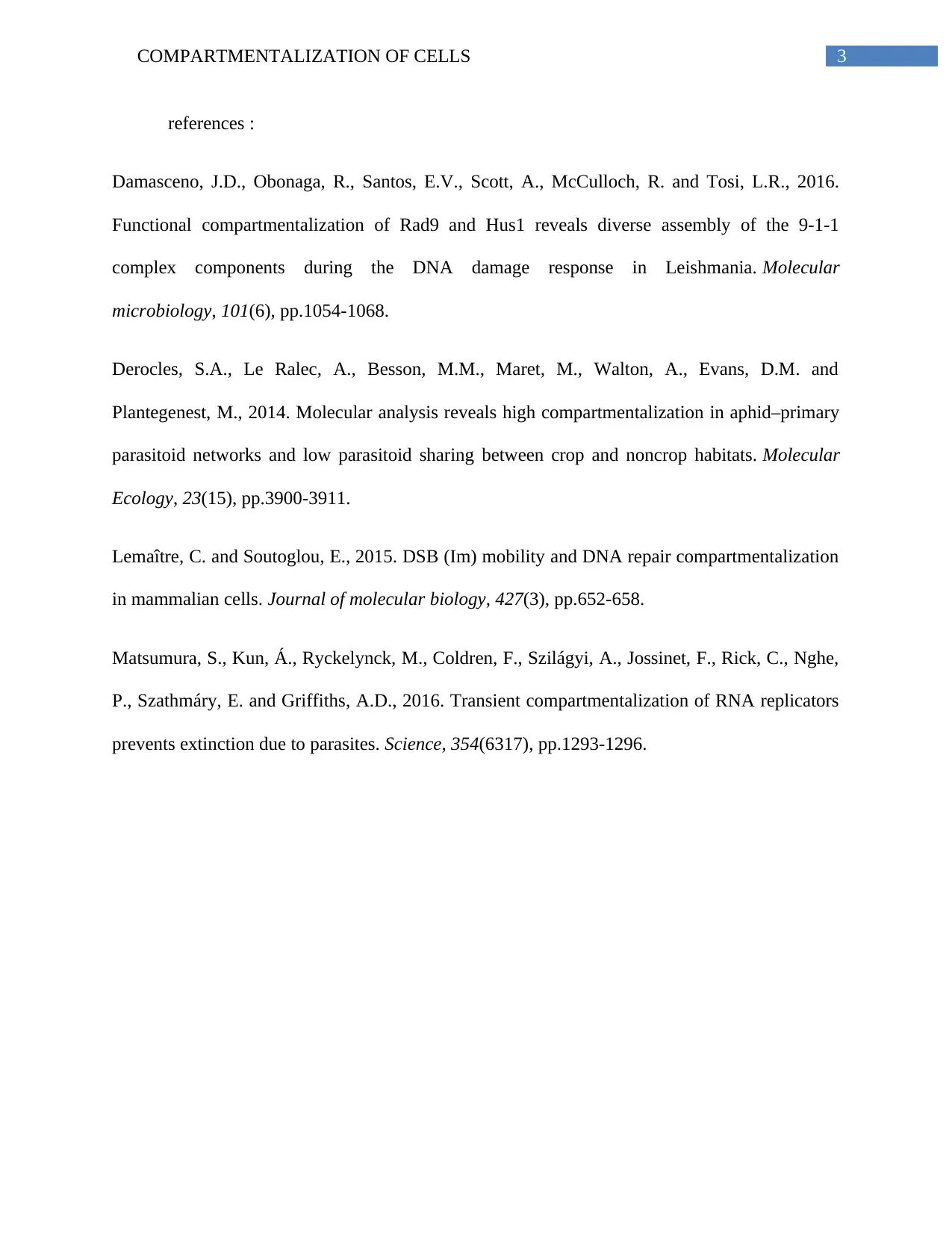Cell Compartmentalization in Eukaryotic Cells: A Biology Report
VerifiedAdded on 2021/11/01
|4
|833
|241
Report
AI Summary
This report provides an overview of cell compartmentalization, focusing on the key organelles within eukaryotic cells. It begins with an introduction to the concept of cellular compartmentalization, emphasizing the importance of specialized structures within cells. The discussion section delves into three main compartments: mitochondria, the powerhouse of the cell responsible for ATP production; the nucleus, which houses the genetic material and controls cell division; and lysosomes, which contain enzymes for digestion and waste removal. The report explains the structure and function of each organelle, including the inner and outer membranes of mitochondria, the nuclear membrane and nucleolus, and the hydrolytic enzymes within lysosomes. The conclusion summarizes the importance of compartmentalization for successful cellular processes and highlights the roles of the mitochondria, nucleus, and lysosomes in these processes.
1 out of 4











![[object Object]](/_next/static/media/star-bottom.7253800d.svg)